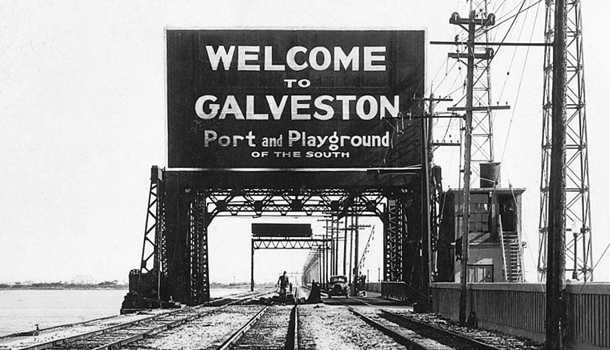
Gay Since the Gilded Age
Historian says Galveston was Texas’ earliest queer mecca.
If there was any city in Texas where gay life could thrive at the turn of the century, it was Galveston.
“Galveston was the largest city in Texas until almost 1900,” says Dwayne Jones, the openly gay executive director of the Galveston Historical Foundation. “It was a port city, with a steady influx of various cultures. It had connections to the port cities of New Orleans and New York, and the kind of services available to gays in those cities eventually became available in Galveston—for example, the Turkish and Russian baths so popular in New York City.”
Jones is collecting information about Galveston gay life in the late 1800s and early 1900s, and plans to publish a book about the subject.
“For the last 15 years, there has been an increased interest in regional and local LGBTQ history,” Jones says.
He says Galveston had all the right elements for gay life: transient sailors, vacation resorts, gambling, red-light districts, and the all-male worlds of Fort Crockett and even the local YMCA.
“Galveston was a very educated city, too,” Jones says. It was also a famous resort town. The carefree vacation atmosphere, with its “what happens here, stays here” attitude, made it easier for gay life to exist discreetly.
Mulling this over, Jones says, “It’s safe to assume that a gay community thrived here at the turn of the century, however quiet it was. So I’ve been poking around to find things from that era.”
Jones gives an interesting example: “In 1887, there was a newspaper headline “Queer Finding at the Hospital.” At that time, Galveston’s St. Mary’s Infirmary was the largest hospital in Texas.

The news story tells of a black woman who died en route to the hospital in a wagon. Her name was listed as Tabitha Young in the city directory. During the inquest examination, doctors discovered she had deformed genitalia. They assumed she was intersex, and thus found her body to be “of medical interest.”
Jones began to research Young and found that she lived in an alley house and worked as a domestic. At one point, Young was arrested for assaulting another woman, and the newspaper described her as “being of mammoth proportions.” She died penniless and was buried in a pauper’s grave. The official death certificate, Jones discovered, listed her as “male.” He speculates that her deformed genitalia may have been a result of self-mutilation.
“Gender conflict goes far back in our culture,” Jones says, adding that if it hadn’t been for the medical team at the hospital, the story would have gone untold.
Jones also notes a late-1920s master’s thesis from the University of Texas in Austin. The author writes about the red-light district in Galveston and tells of one madam who identified as lesbian.
The thesis also speaks of male “social deviants” who cruised such areas as Trinity Church, the courthouse, and City Hall. Black gay men were believed to frequent railroad depots and beach hotels.
“Gay men were aware of each other and met for sex or entertainment. There were certain bars and restaurants where they met,” Jones says. Jones compares Galveston at the turn of the century to the New York City gay life that George Chauncey describes in great detail in his acclaimed 1994 book, Gay New York.
“At the turn of the century, gay people in Galveston were able to get what they wanted. The socially astute knew where to do it and how to do it,” Jones says.
Men from smaller Texas cities were not so fortunate. “[A Texas] district appeals court was in Galveston, and received many lower-court cases from outside Galveston. I’ve found numerous cases where middle-class white men from rural cities were tried for sodomy.
“Some Galveston men of wealth were lifelong bachelors, and often took extended trips to New York City. I still haven’t identified any prominent men of the time as gay,” Jones says. But he adds that they had no reason to assert their sexual orientation, and chose to live discreet lives.
Jones notes that as his research continues, “I’m much more astute than I was before. I’ve begun to see things pop up, and realize I may be exploring yet another hidden element of gay life back then.”
This article appears in the July 2018 edition of OutSmart magazine.











Comments